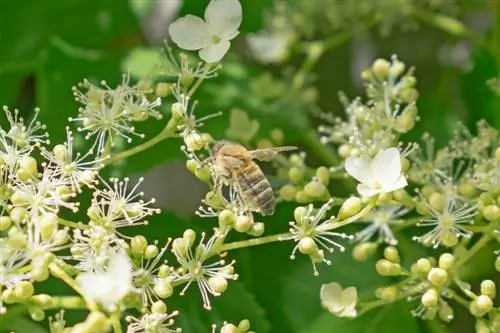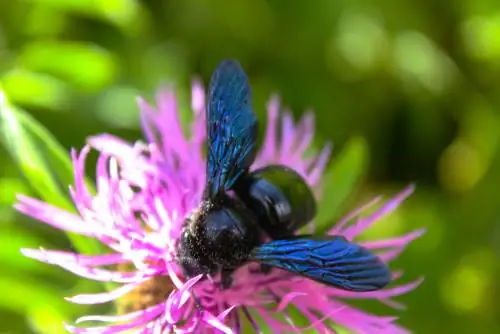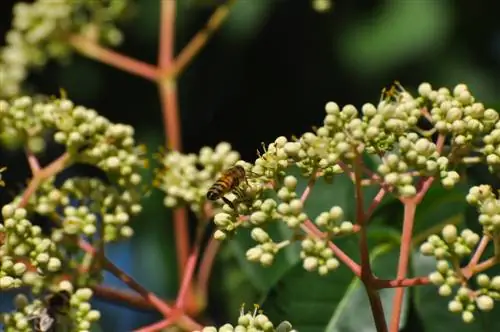- Author admin [email protected].
- Public 2023-12-16 16:46.
- Last modified 2025-01-23 11:22.
You are looking for climbing garden plants that bees and other insects like to visit. You particularly like the climbing hydrangea, but does it have enough nectar for the busy pollinators?

Why is the climbing hydrangea a good pasture for bees?
Climbing hydrangeas attract bees and other pollinating insects because they offer plenty ofnectarto the busy crawling creatures. The large,striking flowers of Hydrangea petiolis bloom from May to July, i.e. the main flight season for honey bees and many wild bee species. The intoxicating scent of the beautiful plant also has an irresistible effect on insects. Other hydrangeas such as the pretty farmer's hydrangeas are less good plants for bees because they only have a few nectar-bearing flowers.
What types of insects other than bees are attracted to climbing hydrangeas?
The large flowers of climbing hydrangeas are visited by wild bees,hoverflies,butterfliesand tinybeetlesvisited. Climbing hydrangeas enrich the nature-friendly garden, even though they are not native plants.
Which climbing hydrangea variety is particularly bee-friendly?
The climbing hydrangea variety “Silver Lining” is considered a very good nectar plant for bees. It delights the insect world from May to June with its creamy white flowers.
Tip
Your children are afraid of the bees that visit your climbing hydrangea, what should you do?
To avoid conflicts between bees visiting the climbing hydrangea and your anxious children or guests, you should plant the climbing hydrangeanot too close to the path or seats. Nervous people could tempt bees to sting. A sufficiently large distance prevents sensitive people from becoming afraid and being stung.






